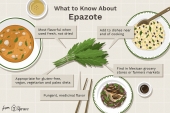








Success has a Thousand Fathers , Failure is an Orphan
LOOK AT THE " SIMILAR THREADS " BELOW !




"You must be the change you want to see in the world." "First they ignore you, then they laugh at you, then they fight you, then you win." --Mahatma Gandhi
"Preach the Gospel always, and if necessary, use words." --Francis of Assisi.
"Family farms work when the whole family works the farm." -- Adam Klaus




allen lumley wrote:Eric K. : A late Welcome to Permies.com, our sister site Richsoil.com, and a Big welcome to the Rocket and Wood stoves Forum threads !
This is a very good question which can be divided into many subsections !
There is a reason that the study of heat Capacity (and the separate item heat transfer ) Is generally called Thermo- god damn- ics !
The chart listed gives water a score of ! (and a bit ) and every thing with a lower #, holds less heat-
every thing with a higher # holds more heat !
'Pure' cob is a mixture of sand and clay, and is actually insulating, as we want to store heat, we use dense, heavy materials from our
environment, field stones, or chunks of urbanite ( locally recycled chunks of slab concrete ) buried close to the Core of the Horizontal
Chimney within your thermal mass !
Water is a very good Heat Exchanger, as well as having a great capacity to hold heat ! Therefor it is a nearly perfect Material to use to
store and transfer heat ! HOWEVER
A well made Rocket Mass Heater will easily produce a stream of hot exhaust gases with Temperatures of 1800 degrees F. This is well
above the point that liquid Water flashes to steam 212 dF ! Here at Permies we Call this BANG - SQISH ! Think Boston Marathon Bombing
with more causualties and more 2nd and 3rd degree full body Burns !
Even if you Had a Plumber Mason corectly make/instail a Rocket Mass Heater RMH, for you, to safely operate an RMH with Water for a
Thermal mass, You will need to educate yourself to at least the equivalent of a Associates degree in H.E.V.A.C. Technology, to Know that
you can opperate this combination of heating Heat Storage Tehnologies!
This is not a system that you go a way for a weekend and leave My brother-in-law incharge of !
There are much easier systems to run, please consider going to rocketstoves.com , and download your PDF Copy of Rocket Mass
Heaters , after you have read thru this book you can come back here and be sure that you are using a commom core of Words to
discuss the Size, Shape and Orientation of the RMHs parts to each other, and themselves !
If there is an RMH in your future, we will help you find it ! For the good of the Craft ! Big AL




R Scott wrote:water stores the most heat per lb or volume at human household temperatures and is cheap. This is why it is used in greenhouses and high-mass passive solar houses. The problem is it does't work at high temperatures. Rocket stoves use cob and rock/rubble because it is cheap, handles high temps, and is slow to release the heat (time-release).




 2
2




How permies.com works
What is a Mother Tree ?




"You must be the change you want to see in the world." "First they ignore you, then they laugh at you, then they fight you, then you win." --Mahatma Gandhi
"Preach the Gospel always, and if necessary, use words." --Francis of Assisi.
"Family farms work when the whole family works the farm." -- Adam Klaus




Zone 5/6
Annual rainfall: 40 inches / 1016 mm
Kansas City area discussion going on here: https://www.facebook.com/groups/1707573296152799/




www.dragonheaters.com
http://blog.dragonheaters.com/

|
Stay foolish to stay sane --Maxime Lagacé ... foolish tiny ad:
To Make a Farm – a film by Steve Suderman
https://permies.com/wiki/213795/Farm-film-Steve-Suderman
|



